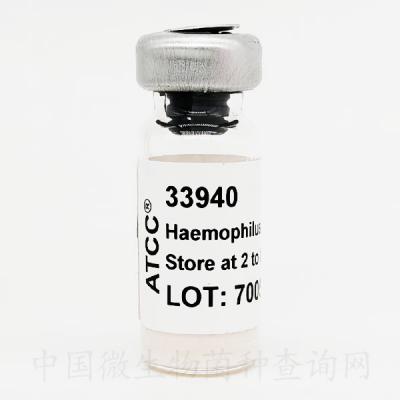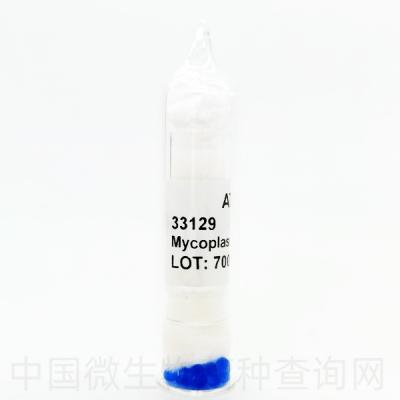
Trichosporon inkin (Oho ex Ota) do Carmo-Sousa et van Uden 拉丁名
(ATCC? 18020?) 統(tǒng)一編號(hào)
Deposited As Sarcinosporon inkin (Oho ex Ota) King et Jong
Strain Designations 菌株別名 [CBS 5585, CCRC 21503, IFO 10131, IGC 3727, NRRL Y-7793, JCM 9195]
Application 用途 Biomedical Research and Development Material
Biosafety Level 生物安全等級(jí) 2
Biosafety classification is based on U.S. Public Health Service Guidelines, it is the responsibility of the customer to ensure that their facilities comply with biosafety regulations for their own country.
Product Format 提供形式 freeze-dried
Storage Conditions 生長條件
Frozen 冷凍物: -80°C or colder
Freeze-Dried 凍干物: 2°C to 8°C
Live Culture 活物: See Propagation Section
Type Strain 模式菌株 yes
Preceptrol? no
Genome Sequenced Strain Yes
Comments 注釋 Genome sequencing strain (University of Tokyo, Japan; RIKEN Center for Life Science Technologies, Japan)
Medium 培養(yǎng)基 ATCC? Medium 200: YM agar or YM broth
ATCC? Medium 307: Cornmeal agar
ATCC? Medium 336: Potato dextrose agar (PDA)
Growth Conditions 生長條件
Temperature 培養(yǎng)溫度: 24°C to 26°C
Atmosphere 需氧情況: Typical aerobic
Name of Depositor 寄存人 LR Hedrick Chain of Custody ATCC <-- LR Hedrick <-- IGC 3727 (Trichosporon inkin)
Isolation 分離基物 Portuguese woman with tinea cruris caused by Trichophyton tonsurans
Cross References Nucleotide (GenBank) : AF105396 26S ribosomal RNA gene, partial sequence
Nucleotide (GenBank) : AF218981 Trichosporon inkin strain ATCC 18020T 5.8S ribosomal RNA gene,
Nucleotide (GenBank) : JXYM00000000 Trichosporon inkin strain JCM 9195, whole genome shotgun sequencing project
References 參考文獻(xiàn) King DS, Jong SC. Sarcinosporon: a new genus to accommodate Trichosporon inkin and Prototheca filamenta. Mycotaxon 3: 89-94, 1975. Goos RD, et al. Effect of warming rates on the viability of frozen fungous spores.
Mycologia 59: 58-66, 1967. Fell JW, et al. Biodiversity and systematics of basidiomycetous yeasts as determined by large-subunit rDNA D1/D2 domain sequence analysis. Int. J. Syst. Evol. Microbiol. 50: 1351-1371, 2000. PubMed: 10843082
do Carmo-Sousa L, van Uden N. Reisolation of Sarcinomyces inkin and its transfer to the genus Trichosporon. Mycologia 59: 653-657, 1967.
Ishikawa H, et al. Simple and rapid method for the detection of Filobasidiella neoformans in a probiotic dairy product by using loop-mediated isothermal amplification. Int. J. Food Microbiol. 178: 107-112, 2014. PubMed: 24685682
McTaggart LR, et al. Rapid identification of Cryptococcus neoformans and Cryptococcus gattii by matrix-assisted laser desorption ionization-time of flight mass spectrometry. J. Clin. Microbiol. 49: 3050-3053, 2011. PubMed: 21653762
McTaggart L, et al. Rapid identification of Cryptococcus neoformans var. grubii, C. neoformans var. neoformans, and C. gattii by use of rapid biochemical tests, differential media, and DNA sequencing. J Clin Microbiol 49: 2522-2527, 2011. PubMed: 21593254
Chagas-Neto TC, et al. Bloodstream infections due to Trichosporon spp.: species distribution, Trichosporon asahii genotypes determined on the basis of ribosomal DNA intergenic spacer 1 sequencing, and antifungal susceptibility testing. J. Clin. Microbiol. 47: 1074-1081, 2009. PubMed: 19225102
Sugita T, et al. Sequence analysis of the ribosomal DNA intergenic spacer 1 regions of Trichosporon species. J. Clin. Microbiol. 40: 1826-1830, 2002. PubMed: 11980969
Scorzetti G, et al. Systematics of basidiomycetous yeasts: a comparison of large subunit D1/D2 and internal transcribed spacer rDNA regions. FEMS Yeast Res. 2: 495–517, 2002. PubMed: 12702266





